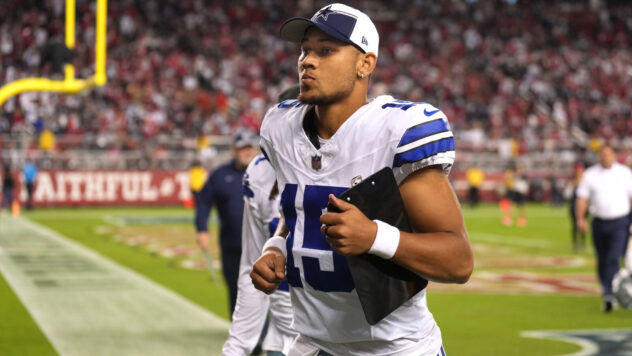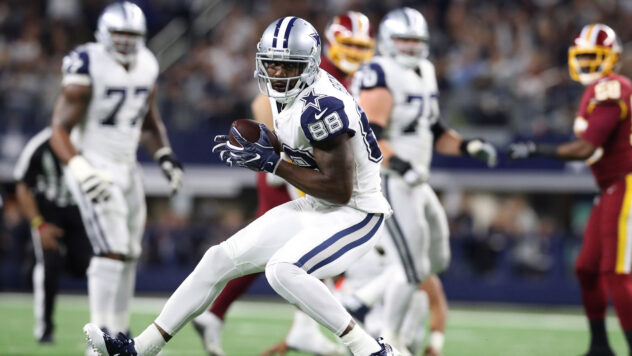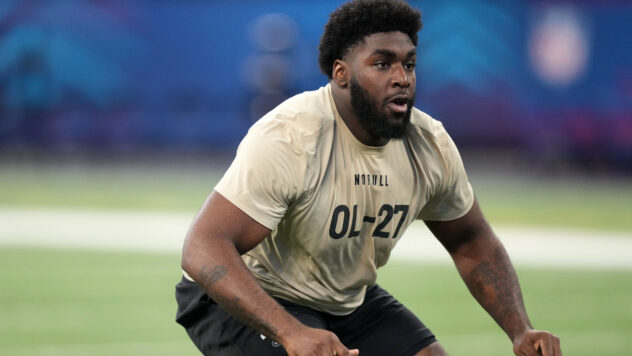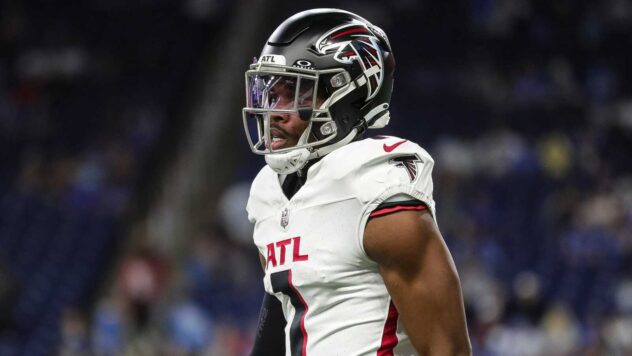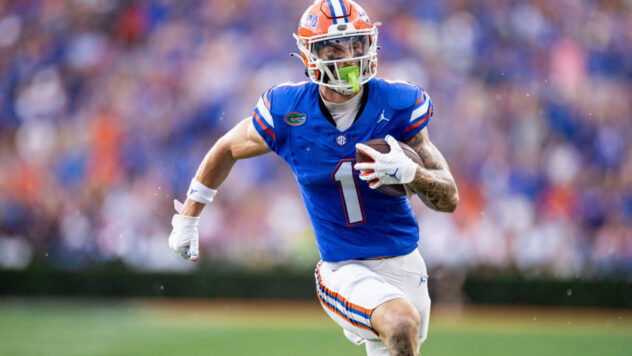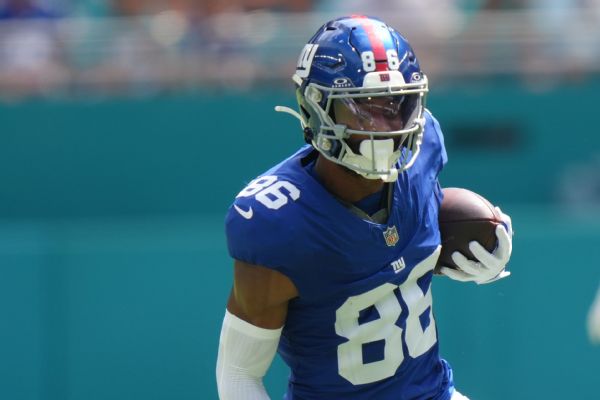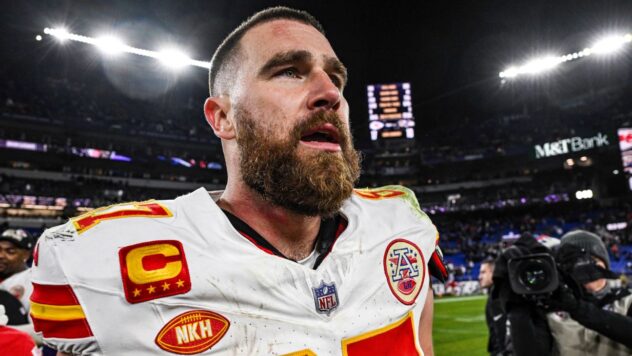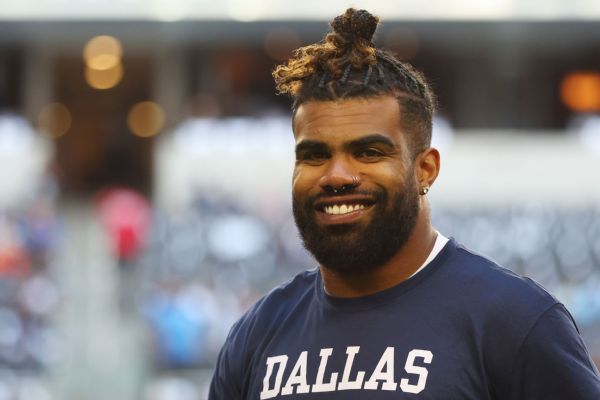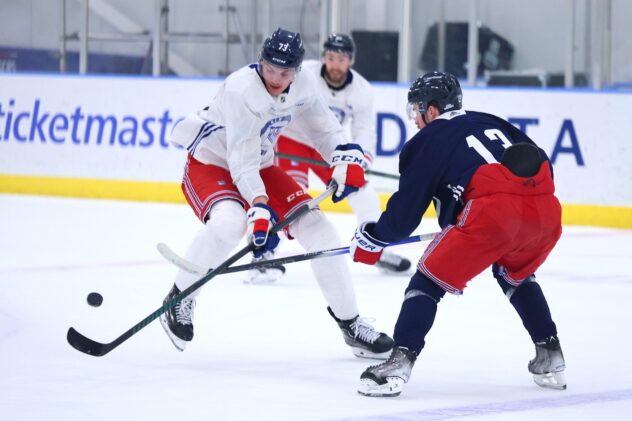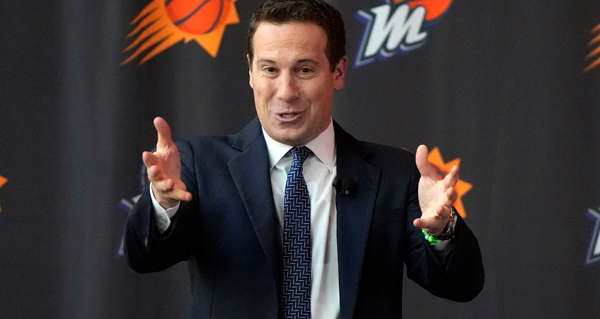NFC South Position Rankings: OL
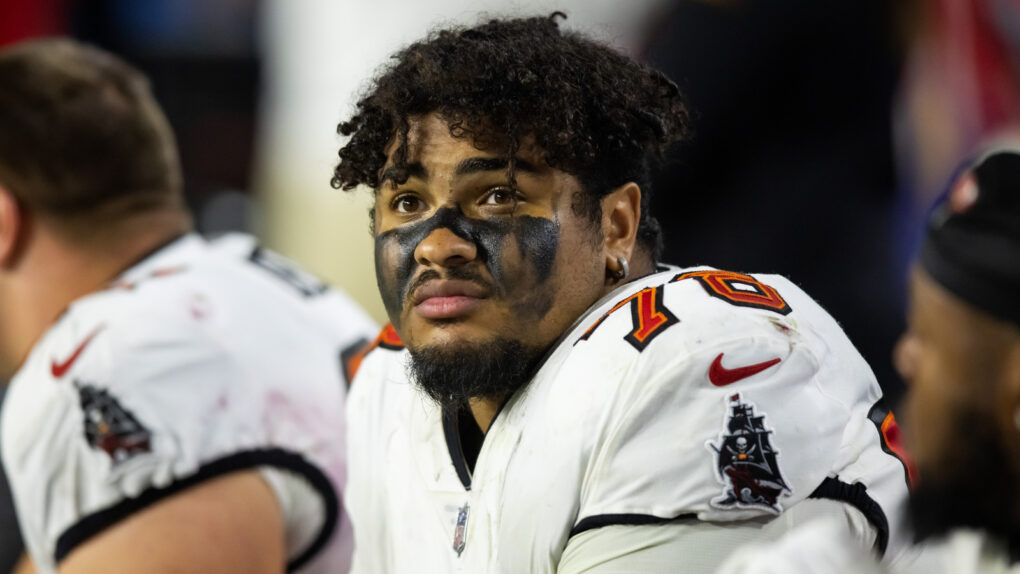
In an ongoing summer series, Pewter Report looks at and ranks each position group in the NFC South. So far, we’ve chronicled and ranked the NFC South quarterbacks, running backs, wide receivers and tight ends. Now it’s on to the NFC South’s offensive lines.
Atlanta Falcons
After scoring the top spot in running backs and tight ends, the Falcons round out the offensive side of the ball by taking the No. 1 spot for offensive lines in the NFC South. Let’s go from best to worst. Right guard Chris Lindstrom has developed into one of the best guards in the NFL, culminating in an overall Pro Football Focus grade of 95.0 in 2022.
Following Lindstrom is left tackle Jake Matthews, who year-in and year-out, has provided above average production. Drew Dalman has quietly emerged as a capable starter at center in head coach Arthur Smith’s wide zone offense, and right tackle Kaleb McGary had an outstanding 2022 season as a run blocker. There is reason to believe both of the latter two may experience some regression in 2023, but overall this is a solid line.
The Falcons seem to be out on Matt Hennessy as a starter despite solid play over the past two years. Instead, they are opting to go with rookie Matthew Bergeron out of Syracuse. Bergeron played left tackle in college but will be making the switch inside, where most draft analysts believe he should play.
For depth, the Falcons don’t have much outside of Hennessy. Jalen Mayfield has been a disappointment since being drafted early in the third round of the 2021 draft. Tackles Ethan Greenidge and Josh Miles have a combined 73 snaps in their careers. Backup center Ryan Neuzil has even less at a total of five. The scheme the Falcons run should help mask deficiencies if they have to use any of these backups, but there could be problems if they experience more than one significant injury.
Overall, the lack of questions among the front five and the overall success this unit sustained in 2022 bodes well for the Falcons having the best offensive line in the NFC South.
Carolina Panthers
The second and third teams in the NFC South rankings for offensive line were very close in my grading. Ultimately, the Panthers gained the edge for a similar reason as to how I closed out my thoughts on the Falcons. The Panthers feature less question marks than the next team on this list.
At left tackle, Ickey Ekwonu experienced some growing pains in his rookie season, but ultimately had a strong inaugural campaign and should be expected to take a step forward in 2023. Next to him Brady Christensen and Chandler Zavala will compete to be the starting left guard. Assuming Zavala’s back is fine I would not be surprised if he wins the job. I am very high on Zavala, ranking him 69th on my overall 2023 draft big board.
At center, the Panthers re-signed Bradley Bozeman, who was solid in his first season in Carolina after coming over from Baltimore.
Moving to the right side of the line, Austin Corbett has been a consistently average player over the last three years. Playing next to the very good Taylor Moton should mean that he will continue to deliver that kind of production.
Much like Atlanta, Carolina will need to count on health as their depth is suspect as well. If Christensen does lose the left guard battle to Zavala, he can provide four position flexibility as a utility sixth man. Behind him, Sam Techlenburg and Cam Erving have experience playing passable football, but Larnel Coleman and Justin McCray don’t.
The Panthers can count on solid play from three of their starting spots and good play out of a fourth on their offensive line. That’s good for second in the NFC South.
Tampa Bay Bucs
Much like quarterback, I wouldn’t be surprised if the Bucs ended the season with the best offensive line in the division. The team has eschewed last year’s roster-building philosophy of plugging in veterans who have relatively stable performance curves (but big injury risks) in favor of high variance players. But realistically, there are question marks at every single position on the Bucs offensive line. Some are bigger than others, but the reality is there will not be a single position manned by the same player as last year. And that in and of itself is inherently risky.
Let’s go through the Bucs offensive line from the smallest question marks to the largest. Kicking things off is Tristan Wirfs at left tackle. Personally, I am betting Wirfs transitions well from right tackle to left. But when analyzing the unit, you can’t rule out that the transition isn’t successful or that at the very least he isn’t as good as he was on the right side. Additionally, going from Tom Brady’s lightning-quick 2.29 second time to throw to Baker Mayfield’s 2.86 seconds will be an adjustment in and of itself.
Next to Wirfs is Matt Feiler, who is a proven steady commodity. Feiler provides solid play, and combined with Wirfs makes a formidably sized left side of the line. On the other hand, Feiler is coming off of his worst season as a pro. I think he has played his best ball as a right tackle dating back to his Steelers days, and would have loved him manning that spot. But the Bucs seem content allowing him to continue at left guard where he has played over the past two seasons.
Ryan Jensen returns to the Bucs starting lineup for 2023 after missing all but the team’s playoff game due to a devastating knee injury he suffered early in training camp. The pros and cons to Jensen are pretty clear. Prior to the injury he was arguably the best center in football. But he is 32 years old and still rehabbing from the aforementioned injury. There is no guarantee Jensen can return to his 2020-2021 form where he played at a Pro Bowl level.
The right side of the Bucs line is a legitimate concern. The team selected North Dakota State tackle Cody Mauch in the second round of the 2023 NFL Draft. Mauch has all the athletic traits you could want in a Dave Canales offensive lineman. He also has a great demeanor that should play well with the Bucs line. But he is switching sides and moving from tackle to guard. Those aren’t easy transitions (as we will cover in a moment). The Bucs are hoping for the best with Mauch, but there is evidence that he may be a year away from being ready.
Lastly, the Bucs have decided to return 2022 second-round pick Luke Goedeke to his college position of right tackle after an objectively disastrous 2022 season where he attempted to transition to left guard. Goedeke showed in Week 18 of last year that he might be at his best as a right tackle, but the concerns about his wingspan as well as the tape he produced last year are still there.
Where the Bucs outshine most of the division is with the depth they have been able to assemble behind the starters. Robert Hainsey provided good play at center last year and is a very good hedge to Jensen’s injury. Nick Leverett likewise showed he can be a starting offensive lineman in the NFL after supplanting Goedeke as the starting left guard midway through last year.
Aaron Stinnie is coming off of a serious knee injury that kept him out for all of last year as well. Stinnie is small sample sizes has provided adequate play for the Bucs in 2020 and 2021. And Justin Skule and Brandon Walton each have some limited decent tape to their names, although both would likely be exposed in extended playtime.
With the caveat that the variance level for this unit is extremely high, the sum of the parts is likely to be greater than the parts themselves with a group that has multiple options if some of the starters don’t pan out to be the best or even good versions of their potential. This gets the Bucs to third in the NFC South for offensive line units. And out of all of the units in the NFC South profiled here this is the one that would make sense at the end of the year in any of the four spots.
New Orleans Saints
Once the crown jewel of offensive lines in the NFC South, the Saints now have a passable, but unremarkable front. It’s not that they don’t have talent. Trevor Penning, a 2022 first round pick, missed over half of his rookie season but closed the season strong. From Week 15 through Week 18 Penning recorded PFF grades of 89.5, 87.6, 79.9 and 61.0. With better health and a full year of reps he could take another step forward and become a Top 20 tackle in the NFL.
Opposite Penning is Pro Bowler Ryan Ramczyk on the right side. Ramczyk had a down year by his standards in 2022. That down year was still good for the 13th-best PFF grade among all offensive tackles.
While the Saints should feel good about both the present and the future at their tackle positions, the outlook for the interior of their line is much less rosy. Right guard Cesar Ruiz has played below average for the entirety of his three-year career. Left guard Andrus Peat similarly has played disappointingly since 2017.
Between those two is center Erik McCoy. McCoy has provided solid play for four years straight. But I would be remiss not to mention that his play has regressed each year since his rookie campaign.
The Saints feature one very good backup in tackle James Hurst. He played so well in Penning’s absence early in the season last year that he had many analysts wondering if the Saints should have gone in a different direction than drafting Penning. Beyond Penning it is a veritable “who’s who” of “who are they?” Storm Norton has been one of the worst starters in the NFL over the past few seasons. Calvin Throckmorton has performed worse than Norton in more limited playtime. Nick Saldiveri is an interesting rookie tackle to guard convert, and Alex Pihlstrom is a rookie undrafted free agent.
The Saints should get passable play from their line this year, but they are fourth in the NFC South in offensive line rankings because of the lack of upside from their interior and lack of depth from their backups.
Final Thoughts
I would not be surprised one bit if three of the four lines in the NFC South rank in the top of the league this year. Similarly, I wouldn’t be very surprised if two of the four lines end up in the bottom 10 of the NFL. The Bucs are the real wild card. Sometimes questions are answered in a positive way. Other times you don’t like the answers that are provided.
If Tristan Wirfs makes a seamless transition, Ryan Jensen returns to pre-injury form, Luke Goedeke plays a passable right tackle as opposed to a terrible left guard, Cody Mauch hits the ground running and Matt Feiler plays equal to the average of his last three seasons, this line could help the Bucs become a surprisingly good offense. But more than likely only two of those best-case scenarios come to fruition and Tampa Bay’s line is more of a Top 20 unit mired in their third-place standing in the NFC South.

